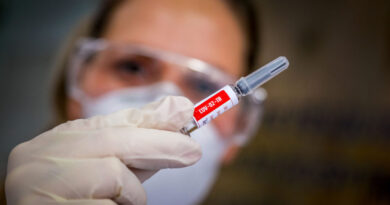Serious Injuries From Merck’s Gardasil HPV Vaccine Significantly Underreported, Study Shows

Most people are unaware that many newly licensed vaccines are in phase 4 clinical trials when they become publicly available. In the case of the new COVID vaccines, which have not yet been licensed, consumers are unknowing subjects in a massive clinical trial.
The complete safety profile of a vaccine is unknown at the time of widespread use. The safety profile becomes more clear only after injuries and deaths related to the vaccine are reported. The safety profile of COVID vaccines, for instance, is still evolving as injuries and deaths accumulate.
It is thus crucially important that consumers and medical professionals report adverse events related to vaccines. According to studies, however, they report only about 1%.
Since 1990, the Vaccine Adverse Event Reporting System (VAERS) has tracked reports of vaccine injuries and deaths. The U.S. Food and Drug Administration (FDA) and the Centers for Disease Control and Prevention (CDC) co-manage the system, and subcontract work to General Dynamics, a global private aerospace and defense company.
VAERS is a passive reporting system. While the CDC website states healthcare workers are “required by law” to report certain adverse events and “strongly encouraged” to report others, there is no penalty if they fail to report, and no real incentive to do so.
Still, the CDC acknowledges VAERS is the frontline of defense in vaccine safety surveillance because initial safety assessments trigger further investigation and determination of causality.
When VAERS receives a report, its first step is to decide whether the event is “serious” or “non-serious” based on criteria in the Code of Federal Regulations. VAERS reviewers then categorize the report according to specific symptoms from the Medical Dictionary for Regulatory Activities (MedDRA) and record them.
If reviewers incorrectly rate an event as “non-serious,” they cease further investigation. If serious adverse events with severe symptoms happen frequently, then reviewers undertake a more rigorous inquiry.
Serious reactions to Gardasil HPV vaccine underreported, study shows
How accurately do the reviewers of VAERS reports distinguish “serious” from “non-serious” adverse events?
When it comes to Merck’s Gardasil HPV vaccine, the answer is “not very,” according to the authors of an article published in the peer-reviewed journal, Science, Public Health Policy, and The Law.
Based on an FDA/CDC post-licensure safety surveillance report for Gardasil, VAERS reviewers determined a 6.2% rate of serious adverse events. Because VAERS reports are publicly available, the authors randomly selected 2,000 reports from those referenced in the FDA/CDC study for independent review. They discovered an alarming pattern of mislabeling “serious” cases as “non-serious.”
The Code of Federal Regulations (CFR) Section 314.80, which defines “serious adverse event,” includes within that definition “a persistent or significant disability or incapacity.” Yet according to the authors of the study, VAERS reviewers for Gardasil’s HPV vaccine, despite being required by law to include that specific adverse event, excluded it from both in their reports and on the VAERS reporting form.
In fact, many reports of adverse events following Gardasil vaccination involve persistent or significant disability or incapacity.
A panel of independent, licensed physicians rated VAERS cases as to whether they were “serious” based on the FDA/CDC and also based on the CFR definitions.
Using the FDA/CDC definition, physicians rated 12% of the cases “serious.” However, when they applied the CFR definition, they rated more than 24% “serious” — nearly four times the FDA/CDC metric.
The FDA/CDC study states: “The VAERS reporting rate for qHPV is triple the rate for all other vaccines combined.”
This injury rate should have alarmed agency officials. Yet no alarm went off. According to the FDA/CDC report, Merck supplied almost 70% of the adverse event reports for Gardasil injuries. This was odd, as the number of adverse events submitted by Merck for other vaccines it manufactures was much lower.
The 70% figure was even more peculiar because almost every Gardasil adverse event report Merck filed failed to provide enough information for authentication or follow-up.
Were Merck’s reports real? Or were they fake? Could Merck have been submitting spurious “non-serious” reports to bring down the proportion of “serious” adverse events? Could Merck have been gaming the safety surveillance system? Could other vaccine manufacturers do the same thing?
If one removes the Merck VAERS reports with unverifiable information, the VAERS rate for “serious” adverse events from Gardasil is 15.7% of the total reports. Would a nearly 16% “serious” adverse event rate have made CDC and FDA rethink their endorsement of Gardasil?
We don’t know the answers to these important safety questions — but we should.
While FDA and CDC acknowledge some shortcomings in VAERS, they imply that other safety surveillance systems, like the Vaccine Safety Datalink (VSD) and the Clinical Immunization Safety Assessment Network (CISA), offset any deficits.
However, neither of those systems come into play unless VAERS first signals a safety concern, and neither will detect a problem if VAERS fails to sound an early warning.
Despite VAERS’ well recognized inadequacy, nothing has changed for nearly 30 years.
Should the same agencies that approve, recommend and profit from a vaccine also monitor its safety? Should VAERS remain so woefully inadequate, poorly scrutinized and riddled with conflicts of interest?
Accurate reporting of adverse events following any newly licensed vaccine is critical especially now with the massive administration of the experimental COVID vaccines. Yet the FDA and CDC continue to circumvent true safety surveillance.
Few studies are available that focus on the nitty gritty of VAERS’ failure. Indeed, this study, too, almost remained unpublished. Medical journals rejected the article after year-long review periods. In 2018, the Indiana Health Law Review accepted the article, but within hours of online, preprint publication, editors removed the article from its website and reneged on its publication offer.
Through the Freedom of Information Act, the authors learned that Dorit Reiss, prominent vaccine enthusiast, interceded with the journal faculty adviser, apparently to pressure the journal to censor the article.
The authors then anticipated publication in 2019, in a peer reviewed medical ethics journal, but that journal too withdrew its offer at the eleventh hour.
It is striking that after the Indiana journal episode, the CDC in 2019 revised its VAERS form. The revision quietly changed the category formerly labeled “Resulted in permanent disability” to “Disability or permanent damages.”
The new tweaked language still obfuscated the necessary legal criteria, and only this year, in 2021, has the CDC finally applied the CFR definition for “serious adverse event” on its website as the law requires.
However, if one does a data query in VAERS even now, the categories still list only “permanent disability” and not “a persistent or significant disability or incapacity,” as the CFR requires.
After this roller coaster ride, the authors are grateful to the Institute for Pure and Applied Knowledge and its founder James Lyons-Weiler, Ph.D. for seeing the article through to publication. The authors hope this study will stimulate further inquiry and the creation of a vastly superior surveillance system.
*
Note to readers: Please click the share buttons above or below. Follow us on Instagram, @crg_globalresearch. Forward this article to your email lists. Crosspost on your blog site, internet forums. etc.
Emily Tarsell is a Licensed Clinical Professional Counselor in private practice in Baltimore, MD.
Featured image is from Children’s Health Defense


